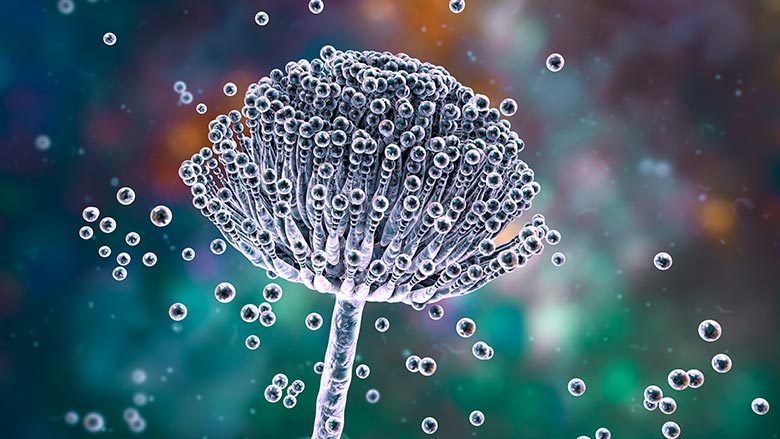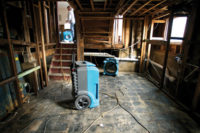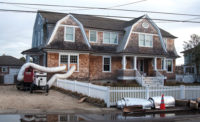
In the 20th century, floods were the No. 1 natural disaster in the United States as counted by lives lost and the extremity of damage to property. More recently, Rhode Island, Connecticut, Massachusetts, Tennessee, Kentucky, Mississippi and Oklahoma all experienced powerful storms that drenched the areas in a matter of days, sometimes hours. Once heavy rains reach the ground, creeks, lakes, and rivers swell affecting surrounding communities.
Once floodwaters subside, the need to provide prompt drying begins; the longer it takes the greater the potential for damage to textiles. Floodwater frequently contains fecal matter that overflows from sewage systems often containing millions of microbes; these tiny organisms present a long-term destructive danger to health.
Contamination of textiles with polluted water poses additional challenges to cleaners, homeowners, and building occupants. Restoration of textiles has been promoted through specialized cleaning or laundering, but these approaches lack sensitive methods to detect hidden microorganisms and a complete understanding of the effect of cleaning solutions or cleaning methods.
The widespread incidence of flooding on textiles makes it inevitable that microbial contamination of textiles will occur in buildings with water damage. Authors of cleaning standards (ANSI/IICRC S500, 2006) have speculated that specialized laundering could return these materials to a hygienically sanitary state.
Fields, farmlands, and sewage systems release contaminants into floodwaters, transporting them inside local homes, schools and buildings. In the case of river flooding, when dwellings become contaminated, a heavy load of organic matter can penetrate into the built environment causing extensive contamination of porous materials, especially textiles such as rugs due to their location on the floor.
Organic matter and water-saturated materials can be used as a substrate for the growth of microorganisms, such as bacteria and fungi. Large quantities of water inside homes evaporates, causing high humidity that contributes to microbial growth on organic materials.

Which organisms grow on materials in flooded homes depends on a series of factors: the physical and chemical makeup of the materials, as varying materials inherently provide micro-specific food sources and, most importantly, the degree of saturation, as this further determines the type of organisms likely to abound.
Microbial growth is largely dependent on the water content, as well as adsorptive or absorptive forces throughout the capillary spaces and on the surface of water-damaged materials. Moreover, every organism has its own particular growth requirements, such as temperature and moisture levels, minimum and maximum water activity (aw) values for various categories of organisms, and optimum levels where organisms thrive.
Where high levels of moisture are available, hydrophilic types are usually observed. If the material is not dried quickly and becomes wetter over time, we may find a succession of inhabiting organisms. Therefore, recovery must be quick when water threatens valuable textiles.
Many people have Oriental rugs that provoke fond memories and hold sentimental value; they may be one-of-a-kind works of art. These strong attachments, especially following floods, often create a desire to salvage as many of these items as possible. Nonetheless, practical concerns regarding how sanitary these items are following flooding raise the question of safety.
My concern is that the role of exposure to contaminated textiles is poorly understood, as is the role of mitigation and its emerging importance. Where we stand today in our knowledge of how microbial ecologies shift when flooding occurs is far ahead of where our industry was just 10 years ago. Yet in spite of the number and magnitude of losses, studies about cleaning efficacy are lacking. Our lack of research as to whether we have returned our belongings to a sanitary state or simply visually clean state is a concern. We know floodwaters ultimately cause materials to break down, but how effective are our cleaning processes?
As consumers become more knowledgeable about public health issues surrounding floodwaters, they rely on properly trained and certified cleaners. This is in part why our industry has evolved. Our industry involves restorers who are expected to be collectively qualified by education, training and experience to appropriately execute a key set of “core skills” on water restoration projects.
While the training towards developing core skills is admirable, I believe additional research is needed. Moreover, organizations must continue to look critically at the accuracy or completeness of the information, which they provide. ANSI/IICRC standards and reference guides are constructed in good faith and are reliable, yet will need revision as developments occur and research provides new technology and procedures.




